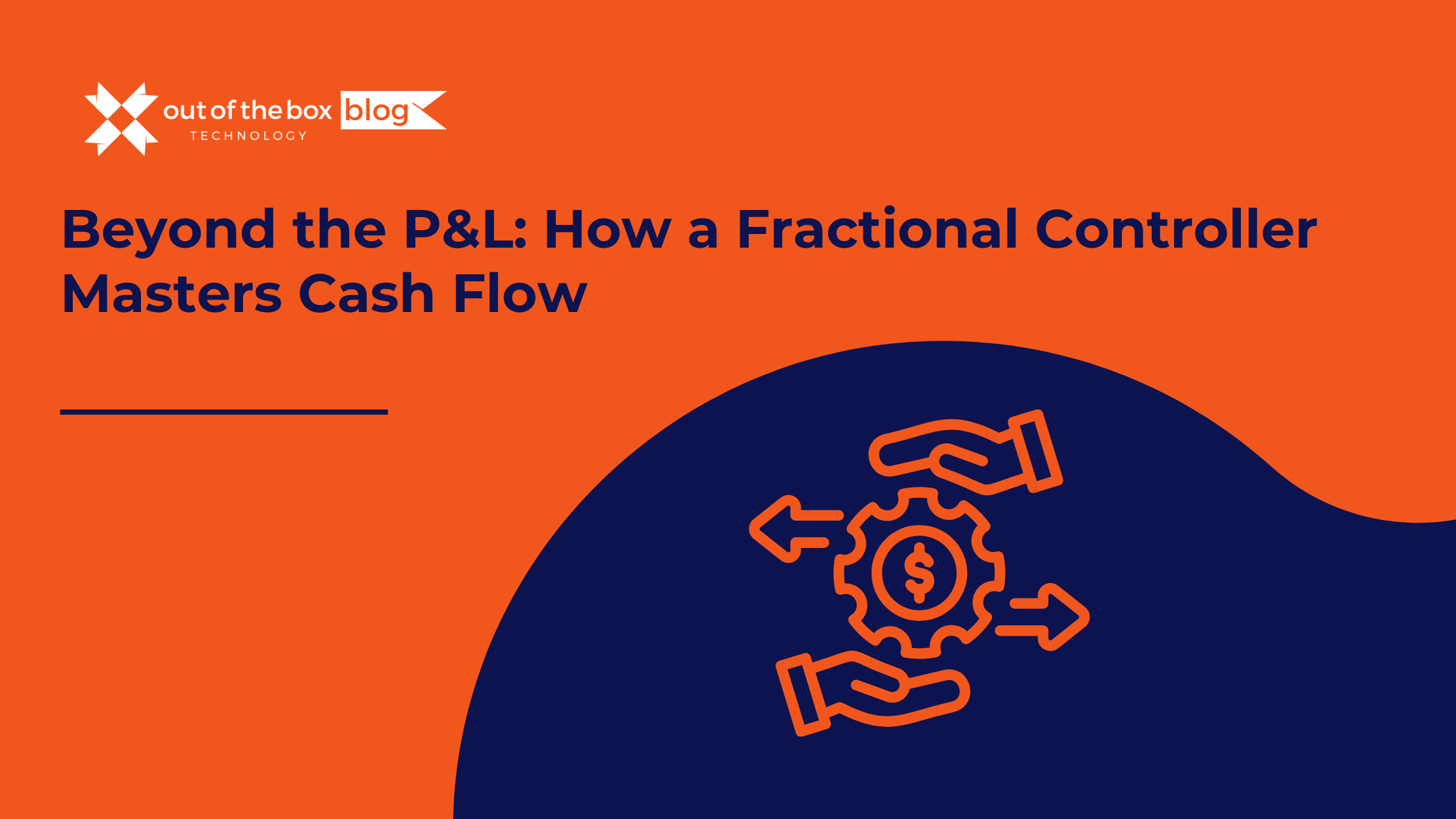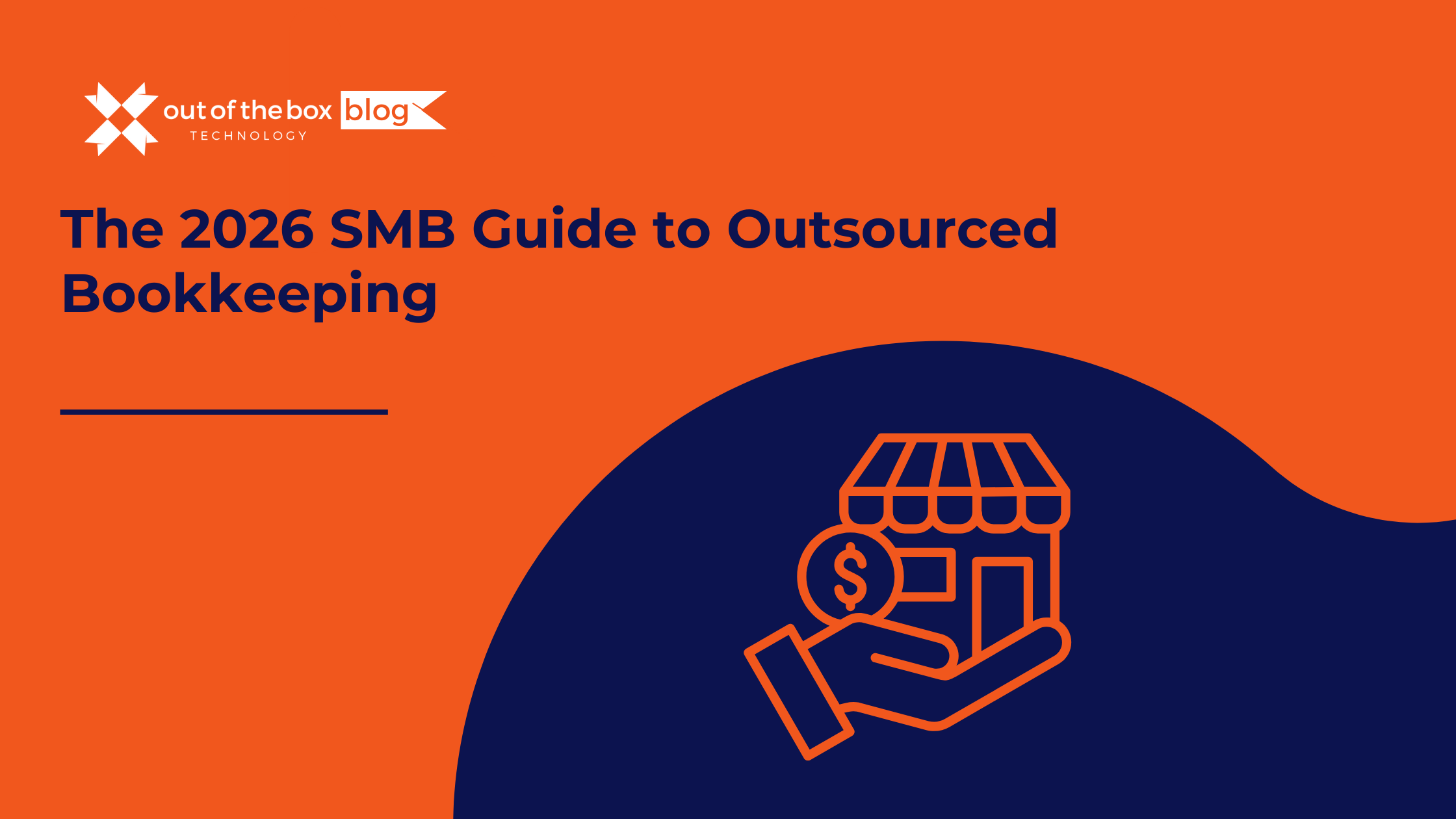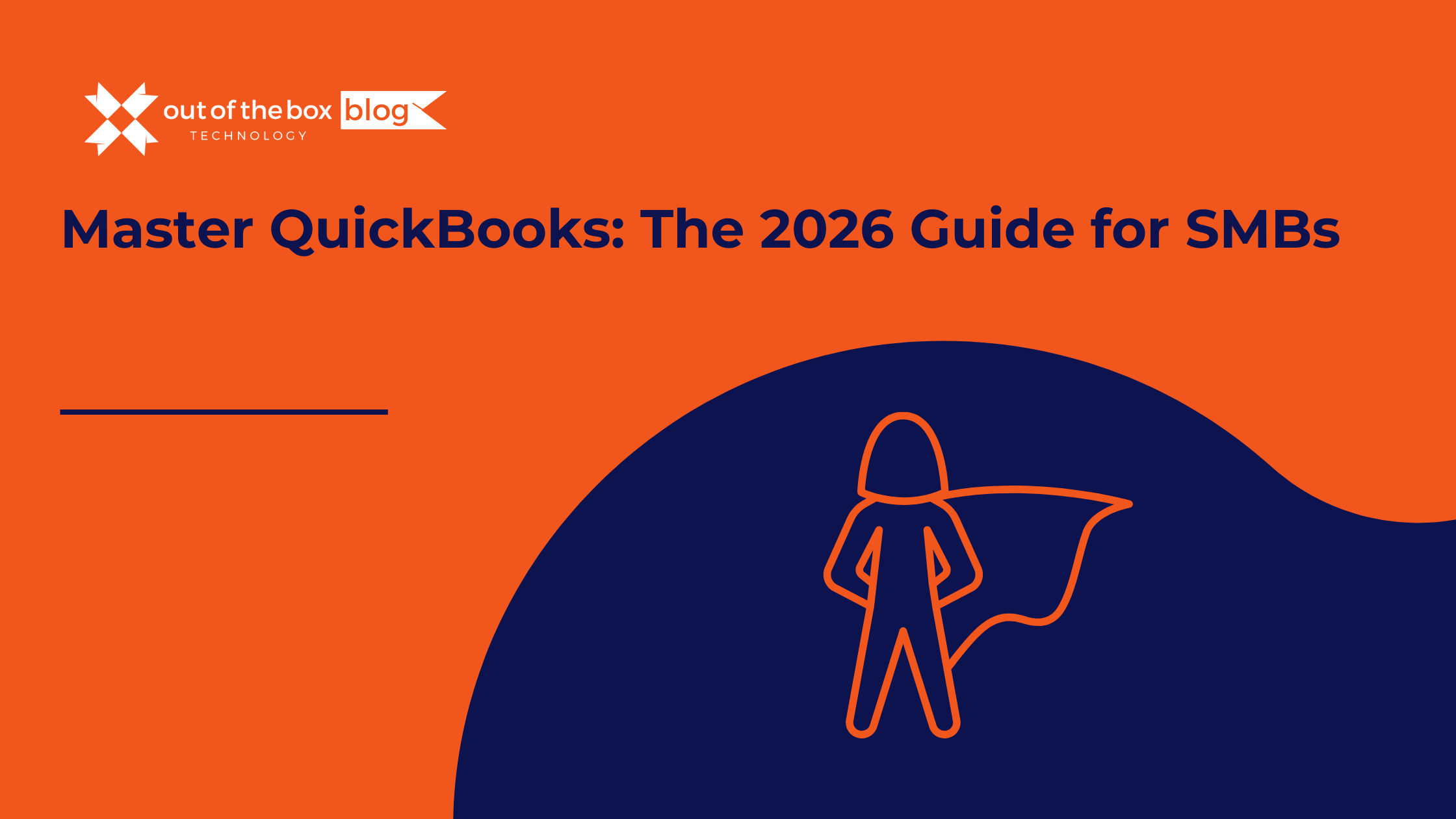It’s the single most confusing—and terrifying—paradox in small business.
You just got your monthly Profit & Loss (P&L) statement from your bookkeeper. It’s a banner month! You’re showing a $75,000 net profit. You’re a success. You feel the relief… for about 10 seconds.
Then you look at your bank account.
You have $12,000. You have a $50,000 payroll due on Friday. You have a $30,000 bill from a supplier. The math doesn’t just “not add up”—it’s a full-blown crisis.
How can you be so profitable and so broke at the same time?
This is the “P&L Paradox,” and it’s the silent killer of thousands of growing businesses. They are run by owners who are diligently managing their P&L, unaware that they are managing the wrong report.
Your P&L is history. It’s an opinion. Your cash flow is the reality, and it is the only report that determines if your doors stay open next week.
A bookkeeper gives you a P&L. A Fractional Controller moves you beyond the P&L and gives you mastery over your cash. Here’s how.
The “P&L Paradox”: Why Profit Isn’t Cash
First, let’s establish a critical fact. A U.S. Bank study found that 82% of small businesses that fail do so because of poor cash flow management. Not because they weren’t profitable. Not because they didn’t have a good idea. They ran out of cash.
A P&L, or Income Statement, is a vital tool. It measures profitability over a period by matching revenues and expenses. But it’s an accrual-based document, and it’s dangerously incomplete. It completely ignores the “cash traps” that sink businesses.
A Fractional Controller’s first job is to show you where the cash is “stuck”—places your P&L doesn’t even look.
1. The “Ghost Profit” of Accounts Receivable (A/R)
You complete a $50,000 job in November. On your P&L, you earned $50,000 in revenue. You are taxed on that profit. But the client is on “Net 60” terms. You won’t see that cash until January. Your P&L says you’re rich; your bank account says you’re empty.
2. The “Invisible Expense” of Debt Payments
You have a $2,000/month payment on a new truck. Your P&L only shows the interest portion of that payment (maybe $500) as an “expense.” The other $1,500 in principal—the vast majority of the cash that just left your bank account—is invisible on your P&L. It’s a Balance Sheet transaction.
3. The “Lump Sum Surprise” of Asset Purchases
You buy a $40,000 piece of machinery. You paid cash. That $40,000 does not appear on your P&L. Instead, it’s recorded as an asset, and your accountant will “depreciate” it (a tiny non-cash expense) over the next 5-7 years. Your P&L looks great, but your bank account is $40,000 lighter.
4. The “Silent Killer” of Owner’s Draws
You’re profitable, so you pay yourself a $20,000 “owner’s draw.” Like a principal payment, this is not an expense. It’s an equity transaction. It doesn’t touch your P&L, but it’s a massive drain on your cash.
A bookkeeper records these things. A Fractional Controller manages them.
What Is a Fractional Controller? (The Proactive Expert)
To understand how a controller masters cash flow, you must first understand what they are.
- A Bookkeeper is a historian. They record the past. They are essential for a clean P&L and tax-readiness.
- A Fractional CFO is a visionary. They look 3-5 years into the future. They handle high-level strategy, mergers, and securing large-scale financing.
- A Fractional Controller is the master of the present. They are the “financial-ops” expert who builds the bridge between your historical books and your future goals.
A controller’s #1 job is to build the systems, controls, and forecasting tools to ensure your business never runs out of cash. They don’t just report on what happened; they manage what’s happening next.
How a Fractional Controller Masters Your Cash Flow (The 4-Step Process)
When an Out of the Box Technology Fractional Controller engages with a business, they immediately move “beyond the P&L” and implement a system of proactive cash management.
Mastery Step 1: They Establish the “Single Source of Truth” (The Statement of Cash Flows)
The first report a controller runs isn’t the P&L. It’s the Statement of Cash Flows. This is the “truth-teller” report that reconciles the P&L’s “profit” with the bank account’s “reality.”
It’s broken into three parts:
- Cash from Operations: Did your core business generate or consume cash? (This is where A/R and A/P live).
- Cash from Investing: Did you buy or sell assets? (The $40k machine lives here).
- Cash from Financing: Did you take on or pay down debt? (The $1,500 truck principal lives here).
The Controller’s Action: A bookkeeper hands you this report. A controller analyzes it to diagnose the problem.
- Real-World Example: A franchise client’s P&L showed a $250k profit, but their cash balance was flat. They were furious and confused. The controller’s Statement of Cash Flows review took 10 minutes and found the answer:
Cash from Operations:+$250,000 (Good!)Cash from Investing:-$150,000 (They bought new equipment for two locations).Cash from Financing:-$100,000 (They paid down a large line of credit).Net Change in Cash:$0
The controller proved the business was healthy—the cash was just “trapped.” It wasn’t a profit problem; it was a cash allocation problem. This instantly de-risked the owner’s anxiety and allowed them to make a smart plan to build up their cash reserves.
Mastery Step 2: They Implement a 13-Week Rolling Cash Flow Forecast
This is the single most powerful tool in a controller’s toolkit. It’s the difference between driving by looking in the rearview mirror (the P&L) and looking out the windshield.
What It Is: A detailed, week-by-week spreadsheet that projects all cash inflows and all cash outflows for the next 13 weeks (one quarter).
- Cash In: It’s not based on your P&L “revenue.” It’s based on your A/R aging report and your sales team’s actual collection estimates. (e.g., “Client A will pay $50k in Week 3″).
- Cash Out: It’s not your P&L “expenses.” It’s your actual cash obligations. (e.g., “Payroll: $50k in Week 2,” “Supplier Bill: $30k in Week 4,” “Truck Payment: $2k in Week 1”).
The Controller’s Action: A recent SCORE.org survey indicated that while many businesses create an annual budget, very few maintain a regular cash flow forecast. The controller lives in this document.
- Real-World Example: A manufacturing client was about to sign a new $500k PO. Their P&L looked great. The controller’s 13-week forecast, however, showed a massive crisis.
- To fulfill the order, they needed $200k in raw materials in Week 2.
- They wouldn’t get paid for the order until Week 12.
- The forecast showed a $150,000 cash deficit in Week 5, right when payroll was due.
- The Solution: The controller used this forecast before the PO was signed. They went to the bank with the forecast and secured a short-term line of credit to cover the gap. They also used it to negotiate 50% payment upfront from the customer. They turned a business-killing crisis into a smooth, profitable win.
Mastery Step 3: They Actively Manage “The Big 3” Cash Levers (A/R, A/P, Inventory)
A bookkeeper just records these numbers. A controller treats them as levers to be pulled and optimized. They track three key metrics you’ve probably never seen:
1. Accounts Receivable & Days Sales Outstanding (DSO):
- The Metric: DSO, or how many days, on average, it takes you to get paid after you send an invoice.
- The Controller’s Action: They don’t just “send reminders.” They analyze why your DSO is 52 days when your terms are Net 30.
- They work with the sales team to stop offering “Net 60” to new clients.
- They analyze A/R by customer to see who the slowest payers are.
- They implement automated collections systems.
- Impact: A controller who shaves just 10 days off your DSO on $1M in sales instantly pulls **$27,000** of cash out of “limbo” and puts it into your bank account.
2. Accounts Payable & Days Payables Outstanding (DPO):
- The Metric: DPO, or how many days, on average, it takes you to pay your vendors.
- The Controller’s Action: They perform a “strategic payment” analysis.
- Are you paying bills the day they arrive? You’re burning cash.
- Are you paying so late you’re incurring penalties? You’re leaking profit.
- A controller schedules payments strategically. They hold onto cash until the due date (or even negotiate for “Net 45” terms), maximizing your cash on hand without damaging vendor relationships.
3. Inventory & Days Inventory Outstanding (DIO):
- The Metric: DIO, or how many days, on average, your cash is trapped in inventory sitting on a shelf.
- The Controller’s Action: For a manufacturing or home services business, this is a goldmine.
- They run an “Inventory Aging” report to find “dust.”
- Real-World Example: A home services client had $300,000 in inventory. The controller’s analysis found that **$80,000** of it was for a product line they hadn’t sold in two years. It was just cash, sitting in a warehouse, collecting dust.
- The Solution: They ran a “clearance” sale on that inventory, turning it back into $60,000 in pure cash in 30 days.
Mastery Step 4: They Create a “Cash-Aware” Culture
This is the final, and most important, step. A Fractional Controller doesn’t work in a silo. They bridge the gap between finance and operations.
- They sit with your sales team and show them how their “Net 60” deals are starving the company of cash.
- They work with your operations manager and show them how over-ordering inventory to “get a discount” is actually costing the company more in tied-up cash.
- They build a company budget (which is P&L-based) but they manage the company to a cash flow forecast.
They move your entire team’s focus from “What’s our profit?” to “What’s our cash position?”
From Mess to Mastery: Where Do You Start?
If you’re reading this from the “P&L Paradox”—profitable but poor—you’re probably feeling both seen and overwhelmed. You’re thinking, “I can’t even get a 13-week forecast; my books are a 6-month-old mess!”
You are not alone. This is the exact journey we are built to manage.
- Start with the Foundation: You can’t have a forecast without accurate, up-to-date books. It starts with an Accounting Clean-Up to get your P&L and Balance Sheet to a trusted, reconciled state.
- Maintain the Momentum: You then move to Monthly Outsourced Bookkeeping. This ensures your books are always reconciled and tax-ready, providing the clean data a controller needs.
- Achieve Mastery: Once this foundation is set, you engage a Fractional Controller. This is the expert who takes your clean, historical data and builds the forward-looking, proactive cash management system that lets you finally grow with confidence.
You don’t need to be a cash flow expert. You just need to have one on your team.
Cash Flow FAQs: Your Questions Answered
Q1: What’s the real difference between a Bookkeeper, a Controller, and a CFO?
- Bookkeeper: Records the past (reconciles accounts, categorizes transactions).
- Controller: Manages the present (builds forecasts, manages A/R & A/P, ensures cash-on-hand).
- CFO: Plans the future (high-level strategy, mergers, banking relationships). A Fractional Controller is the essential, operational link that most growing businesses are missing.
Q2: My business is profitable. Why is my cash flow always bad? This is the P&L Paradox. Your cash is “trapped” in places your P&L doesn’t show:
- Unpaid invoices (A/R)
- Loan principal payments
- New equipment or asset purchases
- Owner’s draws
- Inventory
Q3: What’s the first thing a Fractional Controller will do? The first two things are: 1) Run a Statement of Cash Flows to diagnose your historical cash gaps, and 2) Build a 13-week rolling cash flow forecast to manage your cash moving forward.
Q4: At what size do I need a Fractional Controller? The “size” isn’t about revenue; it’s about complexity. You need a controller when:
- You’re constantly surprised by your cash balance.
- You are managing A/R, A/P, and inventory.
- You have debt or loan covenants to manage.
- You are making “big” decisions (like hiring, buying equipment, or signing leases) but feel like you’re guessing.
Stop Guessing. Start Mastering.
Your P&L tells you if you won the game last quarter. Your cash flow forecast tells you if you can stay in the game next week.
Stop managing your business from the rearview mirror.
If you’re ready to move “Beyond the P&L” and finally get mastery over your cash, let’s talk. Our team of Fractional Controllers is ready to build your forecast and give you the financial clarity you need to scale with confidence.




